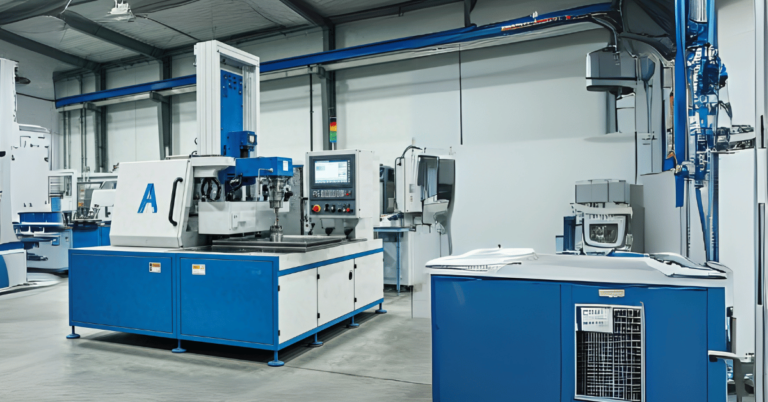Pipedrive Marketing Automation: Boosting Your Sales

In today’s competitive business environment, aligning sales and marketing processes is essential for driving growth and efficiency. Pipedrive, a popular CRM platform, offers robust marketing automation features that help businesses streamline workflows, nurture leads, and close deals faster. By integrating marketing automation into its CRM capabilities, Pipedrive empowers businesses to enhance customer engagement and achieve their sales targets.
In this guide, we’ll dive deep into Pipedrive marketing automation, its features, benefits, use cases, and how it can transform your business operations.
What is Pipedrive?
Pipedrive is a customer relationship management (CRM) platform designed for sales-focused businesses. Known for its intuitive interface and visual pipeline management, Pipedrive helps businesses organize leads, track communications, and optimize sales processes.
In recent years, Pipedrive has expanded its functionality to include marketing automation, making it a one-stop solution for managing customer relationships and executing marketing campaigns.
What is Marketing Automation in Pipedrive?
Pipedrive’s marketing automation capabilities allow businesses to automate repetitive marketing tasks, such as:
- Sending targeted email campaigns.
- Tracking customer behavior.
- Nurturing leads through personalized workflows.
- Synchronizing sales and marketing data.
This ensures that marketing efforts are aligned with sales strategies, resulting in more efficient processes and higher conversion rates.
Key Features of Pipedrive Marketing Automation
1. Email Marketing
Pipedrive allows you to send personalized email campaigns directly from the platform. You can segment your audience, create templates, and track engagement metrics like open and click-through rates.
2. Workflow Automation
Automate routine tasks such as:
- Assigning leads to sales reps.
- Sending follow-up emails based on customer actions.
- Updating deal stages in the sales pipeline.
3. Lead Scoring and Tracking
Use behavior tracking and lead scoring to prioritize high-value leads. This ensures that your sales team focuses on the most promising opportunities.
4. Campaign Analytics
Pipedrive provides detailed analytics to measure the success of your marketing campaigns, including ROI tracking, lead conversion rates, and customer retention metrics.
5. Third-Party Integrations
Enhance marketing automation by integrating Pipedrive with tools like:
- Mailchimp for advanced email marketing.
- Zapier for custom workflow automation.
- Google Analytics for tracking website traffic and conversions.
6. Customizable Triggers
Set up triggers based on customer behavior, such as opening an email, clicking a link, or filling out a form. These triggers can initiate personalized follow-ups or move leads to the next stage in the pipeline.
Benefits of Using Pipedrive for Marketing Automation
1. Streamlined Workflows
Automating repetitive tasks saves time and allows teams to focus on strategic activities like building customer relationships and closing deals.
2. Improved Lead Nurturing
With automated workflows, you can deliver the right content to the right audience at the right time, increasing the chances of converting leads into customers.
3. Enhanced Sales and Marketing Alignment
Pipedrive bridges the gap between sales and marketing by centralizing data and ensuring that both teams are working towards the same goals.
4. Data-Driven Decision-Making
With detailed analytics, businesses can measure the effectiveness of their campaigns and make informed decisions to optimize performance.
5. Scalability
Pipedrive’s automation features grow with your business, making it easy to manage larger volumes of leads and customers as your company expands.
How to Set Up Marketing Automation in Pipedrive
1. Define Your Goals
Start by identifying the objectives of your marketing automation efforts, such as:
- Generating more leads.
- Improving email engagement rates.
- Shortening the sales cycle.
2. Segment Your Audience
Use Pipedrive’s segmentation tools to group leads based on criteria like industry, location, or behavior. This ensures that your campaigns are targeted and relevant.
3. Design Workflows
Create workflows that guide leads through the sales funnel. For example:
- Trigger: A lead fills out a contact form.
- Action: Send a welcome email and assign the lead to a sales rep.
- Follow-Up: If no response after three days, send a reminder email.
4. Integrate with Third-Party Tools
Leverage integrations to expand Pipedrive’s capabilities. For instance:
- Use Zapier to connect Pipedrive with tools like Slack or Asana.
- Sync Pipedrive with Facebook Ads to retarget leads based on pipeline data.
5. Monitor and Optimize
Regularly analyze workflow performance and adjust triggers, actions, or content to improve results.
Real-World Use Cases for Pipedrive Marketing Automation
1. E-commerce Business
- Problem: Difficulty managing customer follow-ups and abandoned carts.
- Solution: Use Pipedrive to send automated cart abandonment emails and follow up with customers after purchase.
- Result: Increased conversions and customer retention.
2. B2B SaaS Company
- Problem: Long sales cycles with inconsistent lead nurturing.
- Solution: Automate email campaigns to educate leads and track their engagement in Pipedrive.
- Result: Higher lead-to-customer conversion rates.
3. Real Estate Agency
- Problem: Missed opportunities due to lack of timely follow-ups.
- Solution: Automate reminders and follow-up emails based on lead activity in Pipedrive.
- Result: Faster response times and more closed deals.
Challenges in Using Pipedrive Marketing Automation
1. Learning Curve
New users may find it challenging to set up workflows or integrate third-party tools.
2. Data Accuracy
Automation is only as good as the data it relies on. Inconsistent or outdated data can lead to ineffective campaigns.
3. Over-Automation
Relying too heavily on automation can make interactions feel impersonal. Striking a balance between automation and human engagement is crucial.
Best Practices for Pipedrive Marketing Automation
- Start Simple: Begin with basic workflows and gradually introduce more complex automations.
- Test Campaigns: Use A/B testing to identify the most effective content and strategies.
- Regularly Update Data: Ensure that your CRM data is accurate and up-to-date.
- Prioritize Personalization: Tailor messages based on customer preferences and behavior.
- Train Your Team: Invest in training to ensure your team can use Pipedrive to its full potential.
Future Trends in Pipedrive Marketing Automation
1. AI-Driven Insights
Pipedrive is likely to incorporate more AI features, such as predictive lead scoring and advanced campaign recommendations.
2. Omnichannel Automation
Expect enhanced capabilities for automating campaigns across email, social media, SMS, and other channels.
3. Integration with Emerging Technologies
Pipedrive may expand integrations to include tools for video marketing, chatbots, and voice assistants.
Conclusion
Pipedrive marketing automation is a game-changer for businesses looking to streamline their sales and marketing processes. By combining its intuitive CRM features with powerful automation capabilities, Pipedrive helps businesses save time, nurture leads, and drive growth.
Whether you’re a small business or a large enterprise, leveraging Pipedrive’s marketing automation can help you stay ahead of the competition and deliver exceptional customer experiences.




